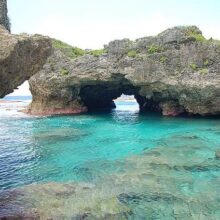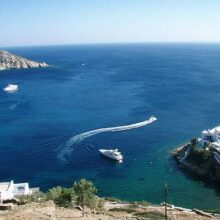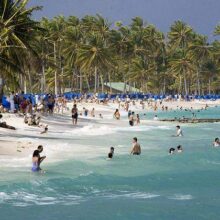Lesser-Known Caribbean Islands to Visit
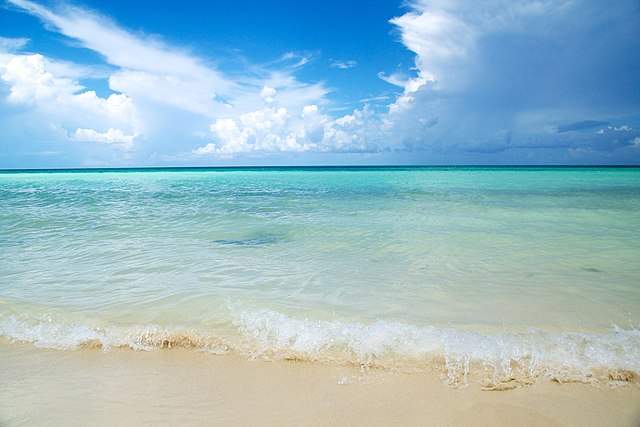
These lesser-known islands in the Caribbean Sea will steal your heart.
Trust me; the majority of you have absolutely no idea of several Caribbean Islands that are as alluring as Cuba or Jamaica.
For example, look at the sample list of the, rather unknown islands floating in the Caribbean on either side of Florida, and Mexico.
- Cayo Guilermo Island
- Isla de la Juventud
- Carriacou Island
Tell me frankly; aren’t you hooked? At least, is your curiosity fully aroused? Read further, man. You will start taking notes.
These astonishing islands are the secret of ardent scuba divers, and beach buffs.
They are refreshingly, very less commercialized. This means, these unheard of Caribbean islands are:
- Less crowded
- Very affordable accommodation
- New, and untried seafood
‘Unheard of’ doesn’t mean, they lack in the attractions, or water-based adventure activities.
On the other hand, you can expect to see lush forests, green-covered mountains, volcano affected black sand beaches, shipwrecks, exotic marine creatures, and unexplored beaches, some beaches which are hidden behind mountains.
Lesser-Known Caribbean Islands to Visit this Year
I will first take up Carriacou Island.
-
Carriacou Island
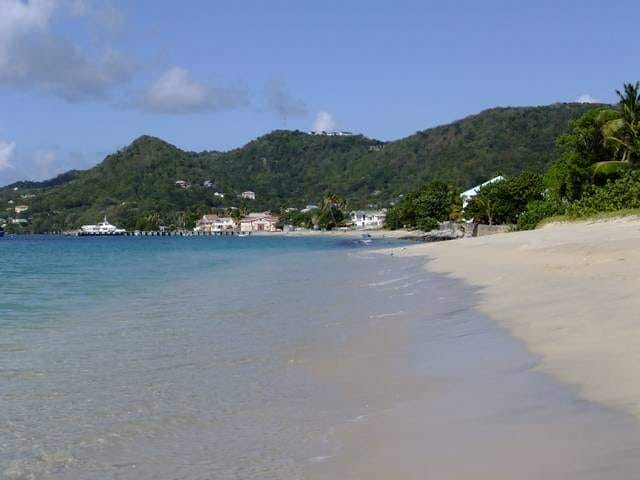
You might have heard about, or even visited Grenada Island or St, Vincent Island. They are part of the Grenadines archipelago.
Carriacou Island is part of that chain of islands.
Overall, 32 islands are in the Grenadines chain of Lesser Antilles Islands. Only 10 are inhabited.
Location of Carriacou Island:
I give below the map of Grenadines archipelago.
It is clear that Carriacou is one of the larger islands of St. Vincent, and Grenadines.
Bequia at the top of the map is the largest of all the islands in the Grenadines.
Hillsborough is the capital city. Below is a view of it.
It looks like a ‘cove’.
How do you get to Carriacou?
You can catch a domestic flight from Grenada to Carriacou’s Lauriston Airport.
Sadly, the SVG Air, that provides this service, has a weekend holiday.
The flight duration is just 20 minutes!
You can also contemplate a voyage from Grenada. However, the one and a half hour sea passage in a ferry is available only three days a week.
Ferry voyage from Grenada to Carriacou. I think the sea passage is more enjoyable and scenic than the short flight.
Amusing fact of Carriacou Island:
Do you know the small Hillsborough city has 100+ shops that sell rum? That is the Caribbean Rum for you.
- Beaches in Cariaacou:
Though, for a casual visitor, all beaches are the same with sand, and salty wind, passionate beach lovers are able to distinguish many differences even from adjacent beaches.
Anse la Roche Beach and Paradise Beach command our attention.
Beaches have a backdrop of mountains that make the islands more beautiful.
- Scuba diving and snorkelling:
This spectacular virgin island pulls divers, and snorkelers, especially the marine biologists, who are keen in studying reefs off remote islands.
The water is ultra clear, so much so that, you can see the swimming and static marine-life at 100 feet below.
For the benefit of snorkelers, and scuba divers, the local guides, and boatmen have identified as many as 30 diving spots.
Another astonishing fact:
In order to attract more scuba divers who love to explore shipwrecks, the Carriacou government authorities have built and sunk two ships, exclusively to promote tourism. Yes, you can call them artificial shipwrecks.
This is weird, and unheard of!
Fish species off the shores of Carriacou:
Apart from coral reefs, and shipwrecks, some unique and exotic fish species can be spotted. They include:
- Nurse sharks
- Roughtail stingrays
- Eagle rays with spots on the upper body
- Humpback whales
-
Rosario Islands
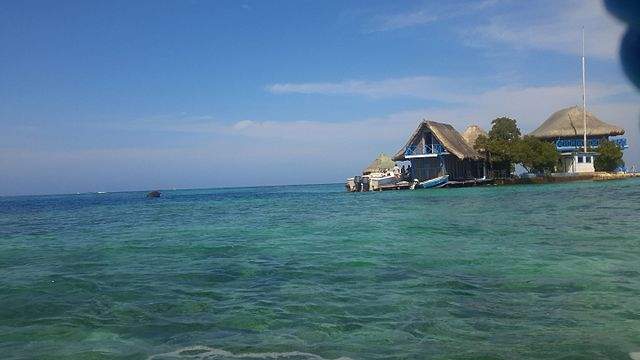
27 islands comprise the Rosario Islands archipelago. I bet, you are hearing about these Caribbean Islands for the first time.
Where are the Rosario Islands?
They are located close to Columbia, a South American country, at the top of the South America map.
Cartagena, a popular Columbian city of high tourism potential, is just 27 km northeast of Rosario Islands.
These small islands and islets are known for very colourful coral reefs.
They are so close to the surface of the Caribbean Sea, so that, the color of the sea poses a brilliant new shade of blusih-green. The reefs pass on their color to their host.
How to reach Roosario Islands?
Cartagena city in southwest Columbia is the gateway. Boats ply between the two destinations. Strangely, the boat that takes you there will be different from the one, that gets you back to Cartagena.
I read, the Rosario Islands and islets are, mostly, privately owned.
I guess they get a good return on their investment because of the number of scuba divers that the corals off these islands, attract.
The 27 km distance is covered in 45 minutes by fast boats.
The islands offer a fantastic sunset view.
Since these unknown Caribbean Islands are mainly visited by the Columbians, the accommodation, and the food are damn cheap.
Birds to spot in Rosario Islands:
- Brown Pelican
This is a rare Pelican species whose beak is a striking brown color.
- Lesser black-backed Gull
We are used to seeing the gull that is blinding white in color. This gull’s back is black. It means, the birds’ wings are black.
- Pink Flamingo
- Gull-billed Tern
Rosario Islands are indeed worth visiting-eh?
-
Cayo Jutias
This is a tiny Caribbean Island, just off the island of Cuba. Again, don’t you agree Cayo Jutias is an unheard of Caribbean Island?
The island’s beach wears a sparkling white sand cover.
Location of Cayo Jutias Island.
The island is floating some 65 km from Vinales, a town in central Cuba.
How to reach Cayo Jutias?
Since the Cayo Jutias is actually considered as a tiny strip of sandbar stretching about 3 km, you can actually drive into the island from Vinales.
Two hours is the road trip. A small causeway connects the island to the mainland Cuba.
What can you do on Cayo Jutias?
Apart from relaxing on the beach, swimming, and snorkelling, there is nothing much to do.
Divers go deep in the sea to photograph the coral reefs.
This is certainly very picturesque, and isolated. You can have the entire 3 km beach to yourself.
If you go there by 4 pm, you can enjoy an uninterrupted relaxation on the white beach, gazing at tge horizon.
Did you notice the green foliage along the beach? It is mangrove that acts as a habitat for crabs, and birds that prey on the crabs. The crabs are known as ‘hermit crabs’.
As there are no places to stay on the island, you have to plan a day trip from Vinales, Cuba.
-
Dominica
This is not the highly popular Dominican Republic, a largely visited West Indies nation, in the Caribbean Sea.
This unknown Caribbean Island is actually a fairly large island comprising a big 750 sq. km area.
Dominica is located just north, northeast of South America. Its capital is Roseau. The island nation is an independent English-speaking country, having got liberated from the administration of the U.K.
Strangely, the island is sandwiched between two French-governed islands called Martinique, and Guadeloupe.
How to reach Dominica?
You can fly into the island from its neighbours, Guadeloupe, Martinique, or Puerto Rico.
However, the most recommended mode of transport to Dominica is by a two hours ferry from Martinique.
From Guadeloupe also, the ferry takes the same duration to reach Roseau, the capital of Dominica.
Hotels to stay on Dominica:
Being quite a large island and an important holiday destination, you have a range of options to stay. I counted more than 100 hotels on the island of Dominica.
What is the biggest attraction in Dominica?
There is a large lake whose water is always boiling due to nearby mountain’s volcanic activity.
This is the world’s second largest boiling lake (hot spring that is large enough to call it hot lake)
This hot spring is part of the Morne Trois Pitons National Park. The UNESCO has awarded the status of World Heritage Site.
To reach the spectacular geographic wonder, you need to drive just 10 minutes from your hotel in Roseau.
Rainforests:
Dominica is a typical tropical island, with fuming rainforests with long, natural trails.
The wildlife of reptiles, snakes, insects, butterflies, and birds are a treat to wildlife enthusiast, and photographers.
Marine Life:
This is the only island in the world, where you can see the spotted dolphins.
You can also spot several species of whales, sharks, and dolphins.
-
Vieques Island
One more under-visited, and under-rated Caribbean island, Vieques belongs to Puerto Rico Island.
Vieques Island is part of the Spanish Virgin Islands.
Locate the Isla de Vieques, at the right extreme of the map. It lies on the east coast of Puerto Rico. From the eastern coast of Puerto Rico, Vieques is just 13 km away.
This little Spanish-speaking Caribbean island is known for some of the world’s best beaches.
The names of the top beaches on Vieques Island:
- Blue Beach alias La Chiva Beach
- Caracas Beach alias Red Beach
- Plata Beach
The whole island’s beaches are covered with white sand. In addition, all the Vieques Island’s beaches are very highly rated.
The island’s wildlife is also famous for uniqueness, and rarity.
-
Cayo Guillermo
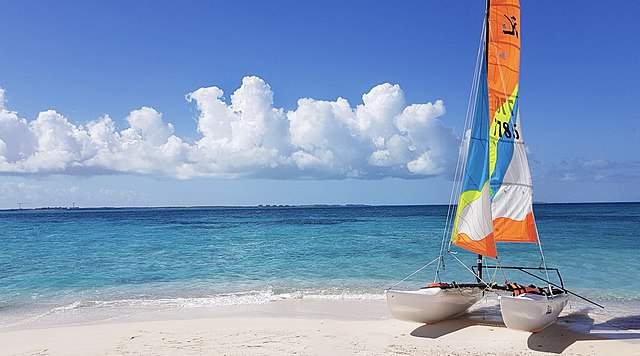
The word ‘cayo’ means a ‘cay’-a small island. I think the cays (keys) are smaller than islets.
It belongs to Cuba. Cayo Guillermo is seen off the northern coast of Cuba. It is part of an archipelago called “Jardines del Rey”. The island is surrounded by the Atlantic Ocean.
Note:
Cuba is an island that is surrounded by the Caribbean Sea in the south, the Atlantic Ocean in the North, and east, and the Gulf of Mexico on its west.
How to reach Cayo Guillermo?
You can either fly directly from Havana the capital city of Cuba to Cayo Coco, or from Cayo Coco by road.
There is a 26 km long road over the Caribbean Sea to Cayo Coco.
I am sure, the road travel over the sea will be very scenic.
The sea on either side of the road is almost at par with the level of the road.
This means, it is not a bridge but only a causeway.
Cayo Coco is again connected by a road with Cayo Guillermo. The distance between the two is 32 km.
What to do in Cayo Guillermo?
The main beach on the cay is known as Playa Pilar. Look at the title image of this island.
The sand is white in color. All the tourist activities and their accommodation are centered around this beach.
The island’s isolation attracts tourists from Cuba, who go there just to stay in a resort, and enjoy the beach, and the fresh seafood.
A total of 10 resorts have come to this tiny cay. This implies, Cayo Guillermo is now a hot tourist spot for the Americans, and the Cubans.
Diving and snorkelling:
The island’s clear sea beckons scuba divers, and snorkelers. Coral reefs, and the fish species, also lure them.
Eating Ropa Vieja:
Ropa Voeja is the must-try food on Cuban islands. It is mainly a beef dish that is cooked with vegetables, and wine!
The food is most enjoyed when eaten with rice. Other accompaniments include banana fruit and black beans.
What an exotic combination!
-
Guadeloupe Islands
Guadeloupe is a French overseas territory. Basically, it is an archipelago. Naturally, French is the spoken language on all of its islands, and islets.
It comprises 8 islands, six of them are liveable, and thus inhabited. Two smaller islands are empty of human settlements,
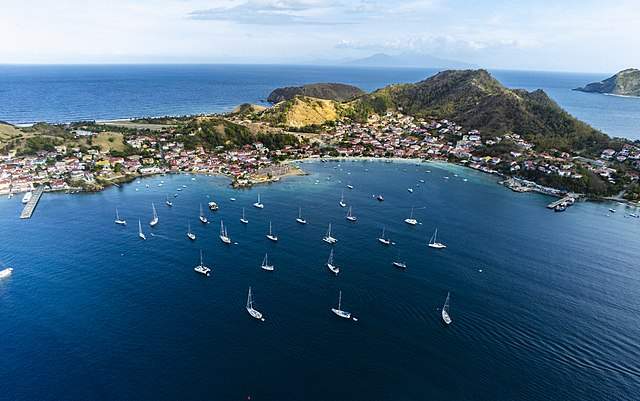
All the islands are floating in the Caribbean Sea.
Location of Guadeloupe:
Sadly, it is shown as a single entity. Clearly missing are its siblings.
To make you easily visualize the location of Guadeloupe, imagine its position just south of Antigua, and Barbuda, the much popular West Indies islands in the Caribbean Sea.
How to reach Guadeloupe?
Ah, that’s easy! Major U.S. cities operate flights without stopping on any other islands to pick up more passengers. Even New York is among them.
You will land at the airport of Base Terre, the capital city of Guadeloupe. Incidentally, it is located on the island named Base Terre.
From Miami, the flying duration is a little more than 3 hours. From New York, it will be four hours, and twenty minutes.
Grande-Terre Island, one of the six inhabited islands of Guadeloupe archipelago, seems to be more popular than Base Terre.
So, be prepared to do a bit of island hopping, when you reach Base Terre.
Note:
The legendary Columbus discovered the islands of Guadeloupe.
Both the Base Terre and the Grande Terre are known for lush rainforests, mountains with gem of waterfalls, deserted beaches, and diverse marine life.
Active Volcano:
There is an active volcano known as Soulfriere on Base Terre. Its crater is situated at an altitude of 4800 feet!
Beaches:
As mentioned above, the beaches are plenty, and deserted.
Grande Anse Beach. It is truly awesome.
The islands’ birds are mostly endemic, and they are worth watching
To see each of these lesser-known islands in the Caribbean region, I think you have to make at least three exclusive trips, keeping your base in Miami.


